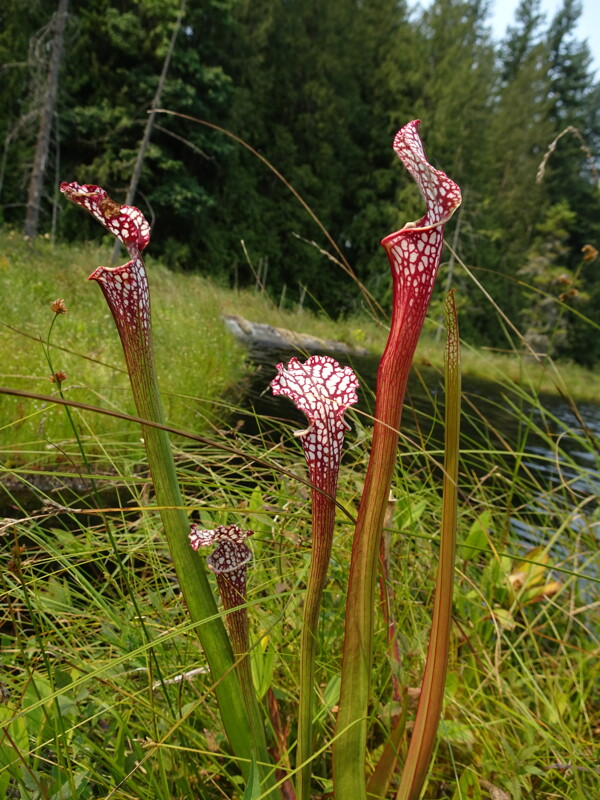Hosted by the University of Washington Herbarium, Burke Museum
Origin: Introduced
Notes: FNA8: "The North American pitcher plants are a fascinating group of carnivorous plants with leaves modified into tubular pitfall traps that attract, catch, and digest small invertebrate prey. The pitchers have no moving parts but contain downward-pointing hairs on the interior surfaces. The hoods keep out rainwater and prevent flying prey from escaping; only Sarracenia purpurea and S. rosea normally contain rainwater inside the pitchers.
Darlingtoniacalifornica is found scattered in the Pacific Northwest (California and Oregon). Sarracenia occurs mainly in the southeastern United States, with one species (S. purpurea) occurring northward and westward across Canada to British Columbia, and naturalized in Switzerland, the British Isles, and Japan. Heliamphora Bentham, a tropical genus with about 15 species, is endemic to the Guayana Highlands of northern Brazil, western Guyana, and southern Venezuela. All species are characteristic of moist-to-wet, open, sunny, low-nutrient, acidic habitats.
The evolutionary origins and relationships of the Sarraceniaceae are obscure, and there is only one (highly questionable) fossil record (Li H. Q. 2005). Molecular data suggest Ericalean affinities (R. J. Bayer et al. 1996). Some authors have suggested that Heliamphora is primitive in the family (B. Maguire 1978) because its pitcher structure is less complex. All three genera have specializations, and their pitcher morphologies are likely affected by adaptations to their wet environments and carnivorous habits. Because we cannot reliably ascertain which taxa are primitive in this family, the genera and species are presented in alphabetic order."
References:

